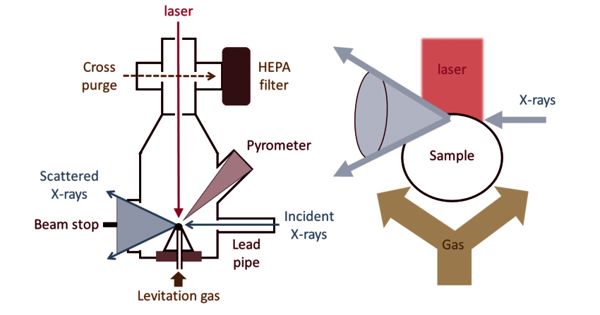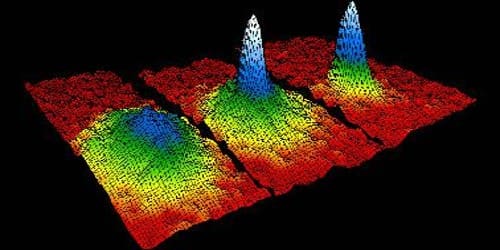In aerodynamic levitation, solids and liquids are floated in a vertical gas stream. Aerodynamic levitation is the use of gas pressure to levitate materials so that they are no longer in physical contact with any container. Container less processing or ‘levitation’ is a valuable tool for the synthesis and characterization of materials, particularly at extreme temperatures and under non-equilibrium conditions. In scientific experiments, this removes contamination and nucleation issues associated with physical contact with a container. The method enables the formation of novel glasses, amorphous phases, and metastable crystalline forms that are not easily accessed when nucleation and growth can readily occur at a container interface.
Aerodynamic Levitation provides an efficient technique for the research on thermophysical properties and solidification behavior of refractory materials.
The term aerodynamic levitation could be applied to many objects that use gas pressure to counter the force of gravity and allow stable levitation. Removing the container enables the use of a wide variety of process atmospheres to modify the structure and properties of a material. Helicopters and air hockey pucks are two good examples of objects that are aerodynamically levitated. The use of aerodynamic levitation in research using small and wide-angle X-ray diffraction, XANES, and neutron scattering are discussed in the context of technique development. It has been used for studies of the physical properties of solids and liquids at high temperatures.

Aerodynamic levitation processing of a Zr-based bulk metallic glass
The term aerodynamic levitation is used for a technique, in which solids or liquids are freely floated on top of a vertical gas stream. It provides an efficient technique for the research on thermophysical properties and solidification behavior of refractory materials. The integration of aerodynamic levitation at synchrotron and neutron sources provides powerful tools to study the structure and dynamics of molten materials. However, more recently this term has also been associated with a scientific technique that uses a cone-shaped nozzle allowing stable levitation of 1-3mm diameter spherical samples without the need for active control mechanisms. Therefore, it allows the conduction of high-temperature experiments while avoiding problems related to the chemical interaction between sample and container walls.
















